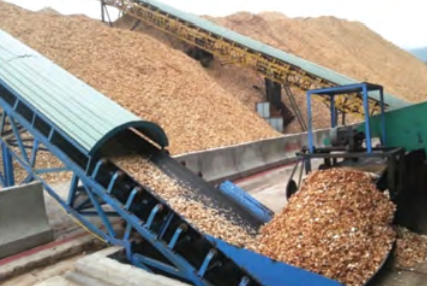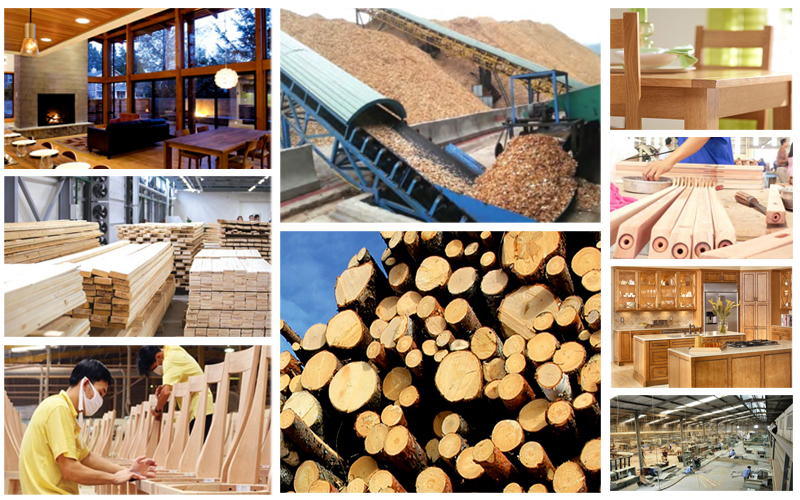Monday, 20/02/2017, 09:48 GMT+7
Aseries of changes in the timber supply source from countries in the region have made challenges in securing the supplies for the timber industry in Vietnam in the coming time, it not only meets the growth in 10-15% per year but also still have to ensure legal timber. In 2016, Vietnam and the EU ended the FLEGT negotiations and after the agreement takes effect, Vietnam’s all wood products which export to the EU must have a legal origin. Along with the change in timber management policies in Myanmar, Laos or China in the tight direction of exporting logs and lumber, which will great
WOODWORKING INDUSTRY IN 2017
TO OVERCOME CHALLENGES, TO GET GROWTH
Challenges from the supply source
In the recent 10 years, Vietnam’s woodworking industry has seen a boom, the export value of the industry in 2010 increased by 16 times compared to 2000, and in the recent five years (2010 - 2015), the export value of the timber industry increased twice
But the wood quality from Vietnam’s plantation forests is uneven, mostly small-diameter timber, wood quality has not been improved, timber productivity per ha for a cycle is low, and has not met the kind of largediameter timber for wood processing and export. And the average timber volume uses 31 million m3 per year for the domestic market as well as export processing, those are the challenge which can not be solved in time near future.

Nguyen Ton Quyen, General Secretary of the Vietnam Timber and Forest Products Association, woodworking industry will have to address issues such as fierce competition in the procurement of timber materials from plantation forest. On the other hand, wood processing enterprises will be faced with the Chinese traders into buying plantation timber of Vietnam, the Chinese Government has banned the harvest and export of timber materials. In order to compensate for their shortage of timber materials including wood, Chinese traders will spill out other countries in the world to purchase timber materials in the market not only Vietnam but Vietnam has been also purchasing the timber in the world market. Besides, Laos and Cambodia have had policies to ban the logs and lumber export from plantation forests, which will increasingly make more fierce competition.

Mr Quyen stressed that timber challenges must have FSC certificate, the PEFC will make difficulties for businesses and clues of supplying timber materials. As for plantation timber, in Vietnam there are only about 200,000 hectares which have been certified FSC (accounting for 8% of plantion area for production in the whole country), that figure is too small compared to the actual needs . And in the coming years, the timber supply must ensure 100% FSC certified, it is the biggest challenge for Vietnam timber businesses.
Meanwhile, the search for the providers who have source of legal timber also have difficulties with businesses, while Vietnam buy timber from more than 70 countries and territories around the world, but there are still the timber sources which are not controlled. Every year, Vietnam imported an average of 7.5 to 8 million m3 of log and annual increases , which create greater pressure for the timber industry.
Find advantages in 2017
According to Duong Phuong Thao - Ministry of Industry and Trade, the current furniture market is worth about US$400 billion, and Vietnam have a lot of chances to develop. But there are many signs that, the world economy is entering a new crisis, and the global market will go more negative direction, it’s an issue that wood Vietnamese enterprises should calculate to build the roadmap for their development with reasonable prices of products in the coming year.
Thao said that the demand for timber material sources will increase, but the supply source will have shortage, and more importantly, the industry’s growth in 2017 is likely to increase one digit (under 10%), and exporting Vietnam’s wood products need an accurate assessment of price, quality and supply source. And the Government will have a reasonable mechanism to protect the interests of enterprises which connect timber materials on the market.
Bui Nhu Viet - Vice Chairman of Binh Duong Furniture Association recommended that the policies of afforestation, tariffs on rubber wood products and embryos for Acacia, Melaleuca and rubber will be the solutions for the challenges of timber industry in 2017.
And according to Tran Le Huy - Representatives of FPA Binh Dinh, the advantages of Vietnam’s export woodworking enterprises will be the Government’s decisions to restrict the exports of timber material effectively, will protect the source of material timber plantations are provided adequately and sustainably in the coming year, as well as help businesses reduce the pressure from the supply source, and create sustainable development.



















